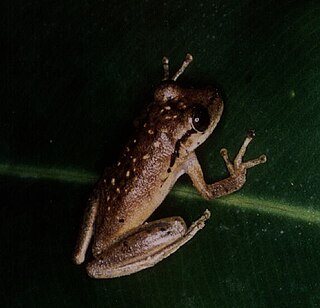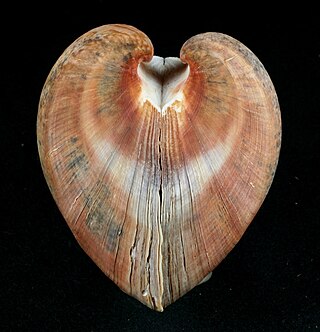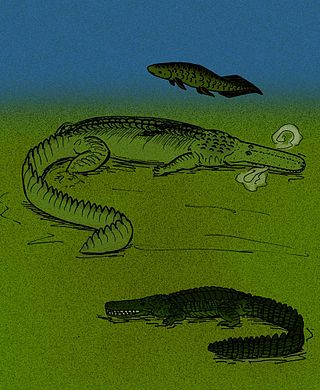
Marmots are large ground squirrels in the genus Marmota, with 15 species living in Asia, Europe, and North America. These herbivores are active during the summer, when they can often be found in groups, but are not seen during the winter, when they hibernate underground. They are the heaviest members of the squirrel family.

Sphaerites is a genus of beetles, the only genus in the family Sphaeritidae, sometimes called the false clown beetles. There are five known species, which are widespread in temperate areas of the Northern Hemisphere, found in forested or upland areas.

Cortinarius is a globally distributed genus of mushrooms in the family Cortinariaceae. It is suspected to be the largest genus of agarics, containing over 2,000 widespread species. A common feature among all species in the genus Cortinarius is that young specimens have a cortina (veil) between the cap and the stem, hence the name, meaning curtained. Most of the fibres of the cortina are ephemeral and will leave no trace once gone, except for limited remnants on the stem or cap edge in some species. All have a rusty brown spore print. The common names cortinar and webcap refer to members of the genus. Due to dangerous toxicity of several species and the fact that it is difficult to distinguish between various species of the genus, non-expert consumption of mushrooms from the genus is discouraged.

Scinax is a genus of frogs in the family Hylidae found in eastern and southern Mexico to Argentina and Uruguay, Trinidad and Tobago, and Saint Lucia. These are small to moderate-sized tree frogs, drably colored. Duellman and Wiens resurrected this genus in 1992. The name originates from the Greek word skinos, meaning quick or nimble.
The Roque tree frog is a species of frog in the family Hylidae found in Colombia, Ecuador, and Peru. Its natural habitats are subtropical or tropical moist lowland forests, subtropical or tropical moist montane forests, and rivers. It is threatened by habitat loss.

Epomophorus is a genus of bat in the family Pteropodidae. They have a distribution throughout Africa.

The false ark shells (Cucullaea) are a small genus of marine bivalve molluscs related to the ark clams. The genus is the only member of the family Cucullaeidae.

Capitosaurus is an extinct genus of temnospondyl whose remains have been found in Spitsbergen and Germany. Its skull was 30 cm long, with a total length over 122 cm. Several species have been assigned to the genus over the years, but only C. polaris is still valid today.
Batrachosaurus is an extinct genus of prehistoric brachyopoid amphibian that lived in Germany during the Middle Triassic (Ladinian). The genus was named by Joseph Fitzinger in 1837 and the type species, B. jaegeri, was named three years later in 1840. It may have been the same animal as Mastodonsaurus.

Urocordylus is an extinct genus of nectridean tetrapodomorphs. It is the type genus of the family Urocordylidae. Fossils have been found from Ireland that date back to the Westphalian stage of the late Carboniferous. It had total length of about 19.5 in (500 mm), but the skull was only about 1.3 in (33 mm) long.

Retodus is an extinct genus of prehistoric lungfish found in Cretaceous-aged freshwater strata of Egypt, Algeria and Niger. The type species, R. tuberculatus, was named in 2006. It was originally named as a species of Ceratodus and Neoceratodus in 1963.

Oberea is a genus of longhorn beetles, most of which are stem borers of various plants, including blackberries and their relatives.

Clivina is a genus of ground beetle native to the Palearctic, the Nearctic, the Near East and North Africa. There are more than 600 described species in Clivina.
Episoriculus is a genus of shrew in the red-toothed shrew subfamily. Its common is brown-toothed shrew. It has been described as a subgenus to Soriculus in the past. The genus occurs at a number of locations in Asia, including Nepal and China.
Carsidaridae is a bug family in the superfamily Psylloidea, with a world-wide distribution; the type genus Carsidara is from eastern Asia.
Rhadalognathus was a prehistoric crocodile-like amphibian that belongs to the Mastodonsauridae family. Not much is known about this creature but it lived in the Triassic period. Rhadalognathus is also the name of the genus in which the organism belongs within. Rhadalognathus was found in northern Arizona, US, by S. P. Welles in 1947. The size of the organism is unknown but its skull is about 17in long and weighs 7lbs.

The Interim Register of Marine and Nonmarine Genera (IRMNG) is a taxonomic database which attempts to cover published genus names for all domains of life, from 1758 in zoology up to the present, arranged in a single, internally consistent taxonomic hierarchy, for the benefit of Biodiversity Informatics initiatives plus general users of biodiversity (taxonomic) information. In addition to containing just over 500,000 published genus name instances as at May 2023, the database holds over 1.7 million species names, although this component of the data is not maintained in as current or complete state as the genus-level holdings. IRMNG can be queried online for access to the latest version of the dataset and is also made available as periodic snapshots or data dumps for import/upload into other systems as desired. The database was commenced in 2006 at the then CSIRO Division of Marine and Atmospheric Research in Australia and, since 2016, has been hosted at the Flanders Marine Institute (VLIZ) in Belgium.
Compsosaurus is an extinct genus of phytosaur, a crocodile-like reptile that lived during the Triassic. Its fossils have been found in North Carolina. The type species, Compsosaurus priscus, was named by American paleontologist Joseph Leidy in 1856, although other sources say 1857. Compsosaurus may have been the same animal as the related Belodon.

Baena is an extinct genus of baenid turtles.

Aphelocheirus is a genus of true bugs belonging to the family Aphelocheiridae.














